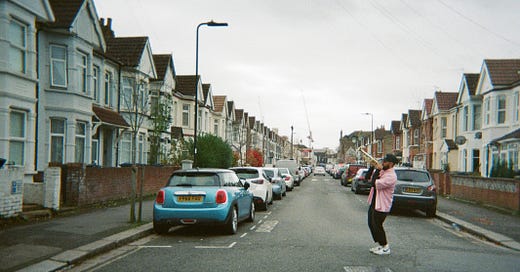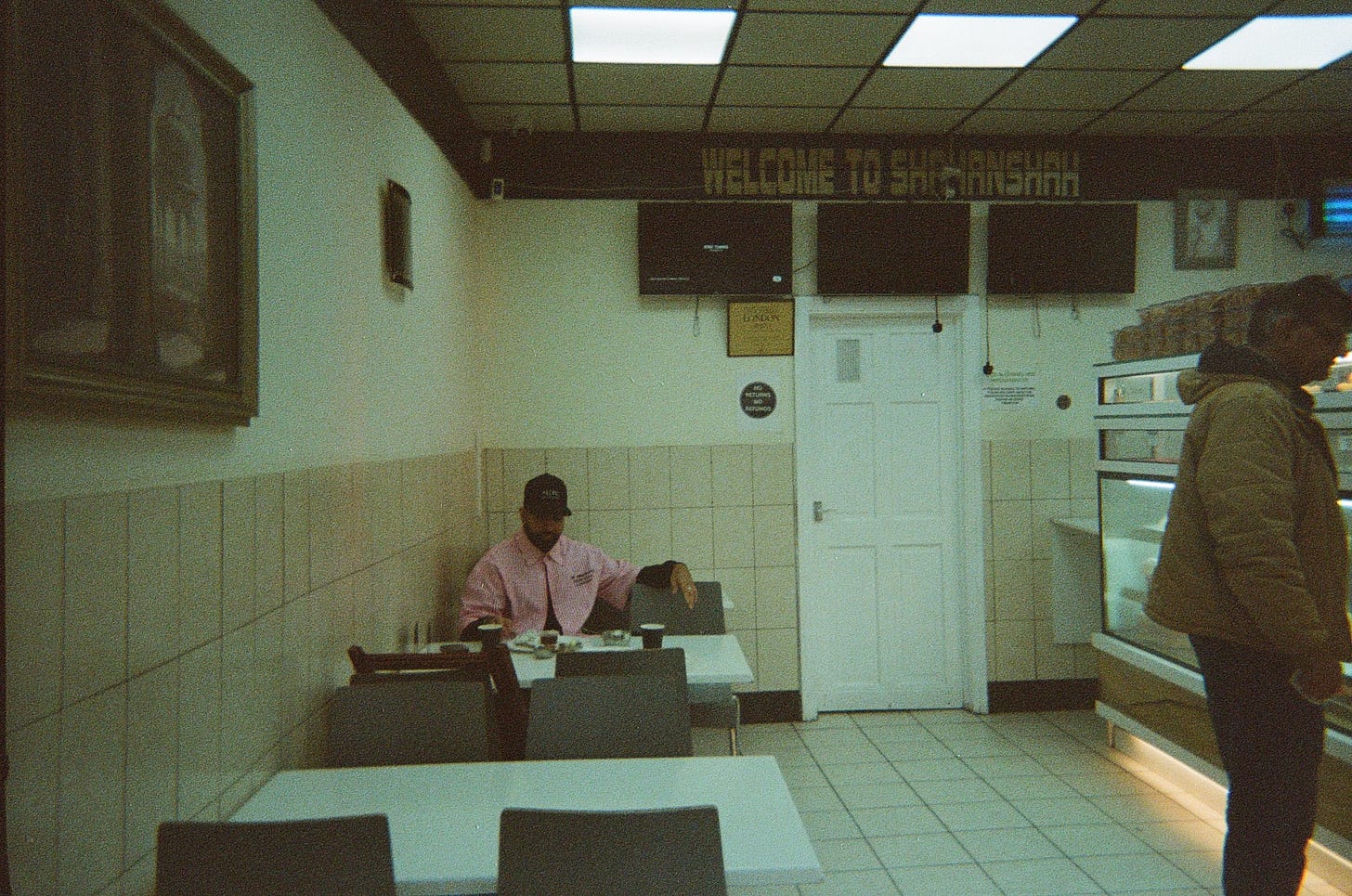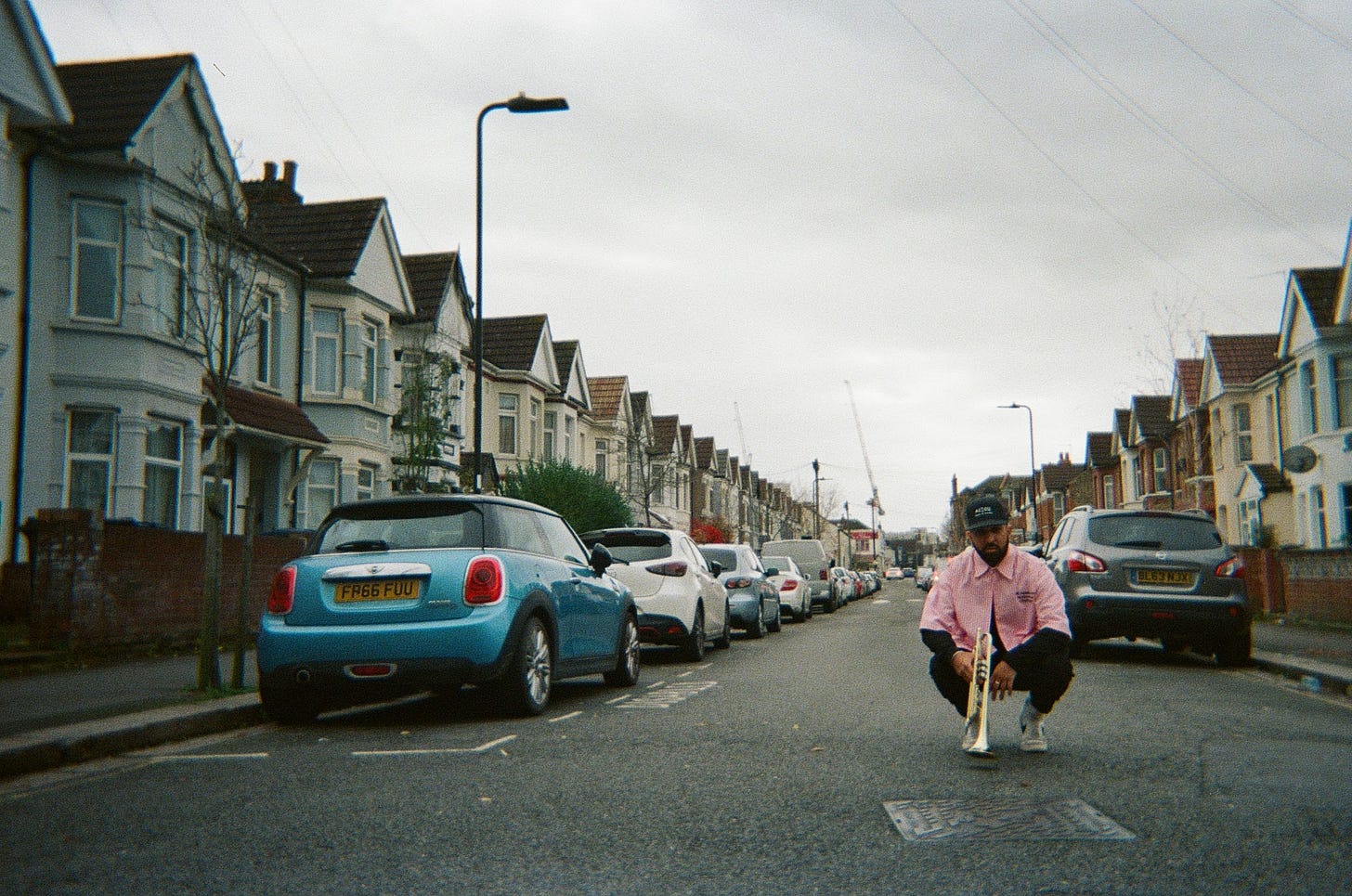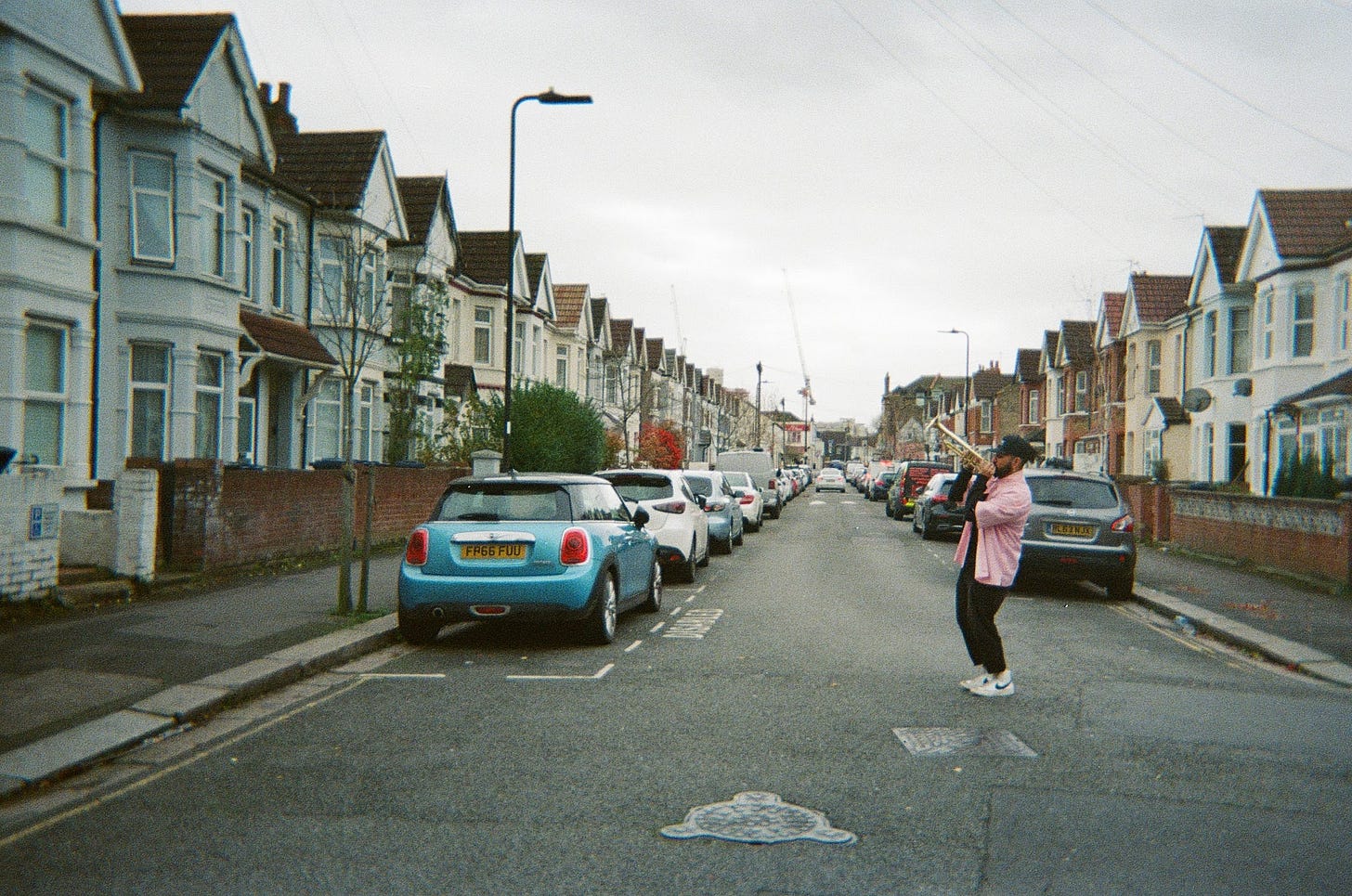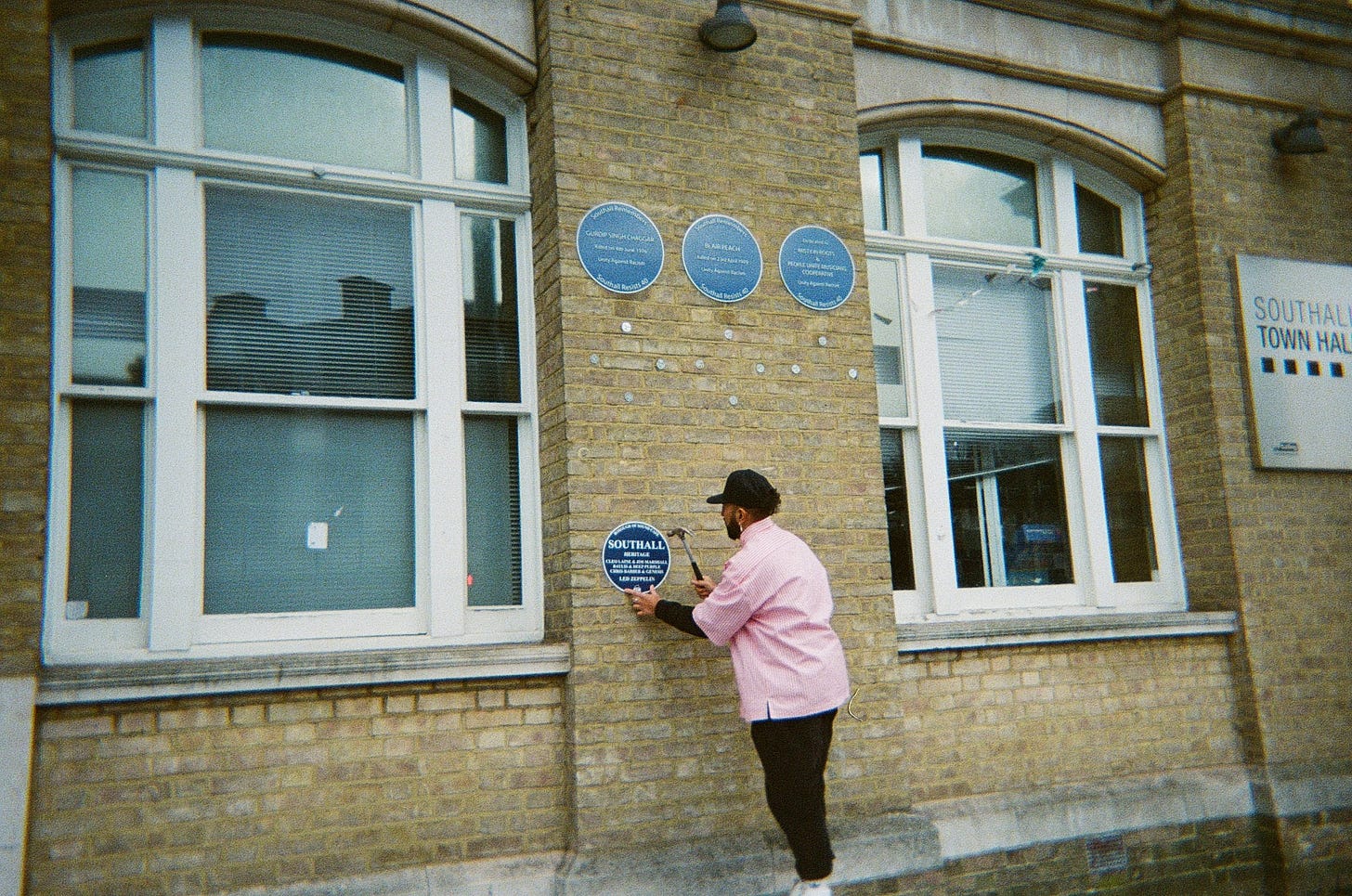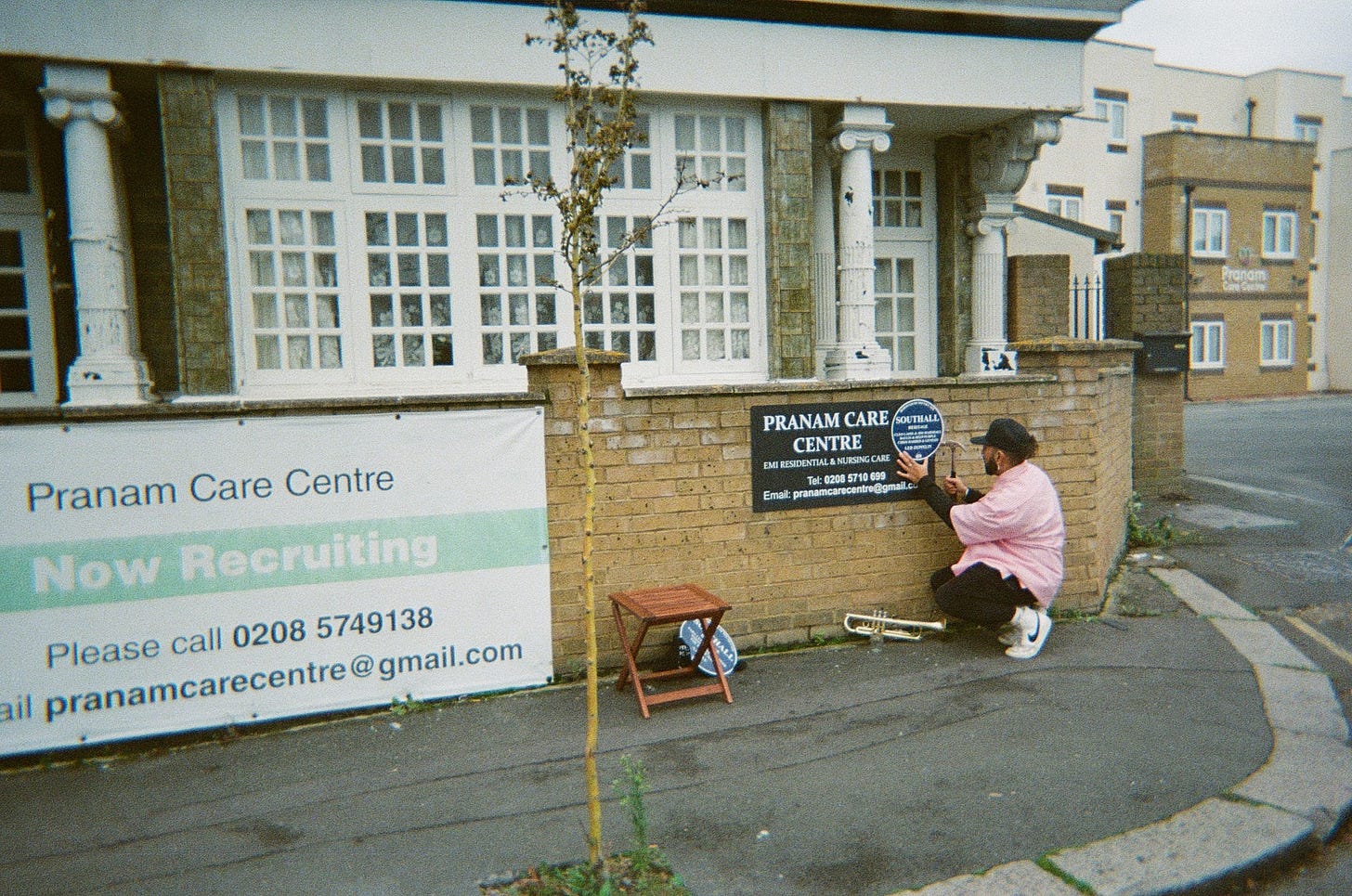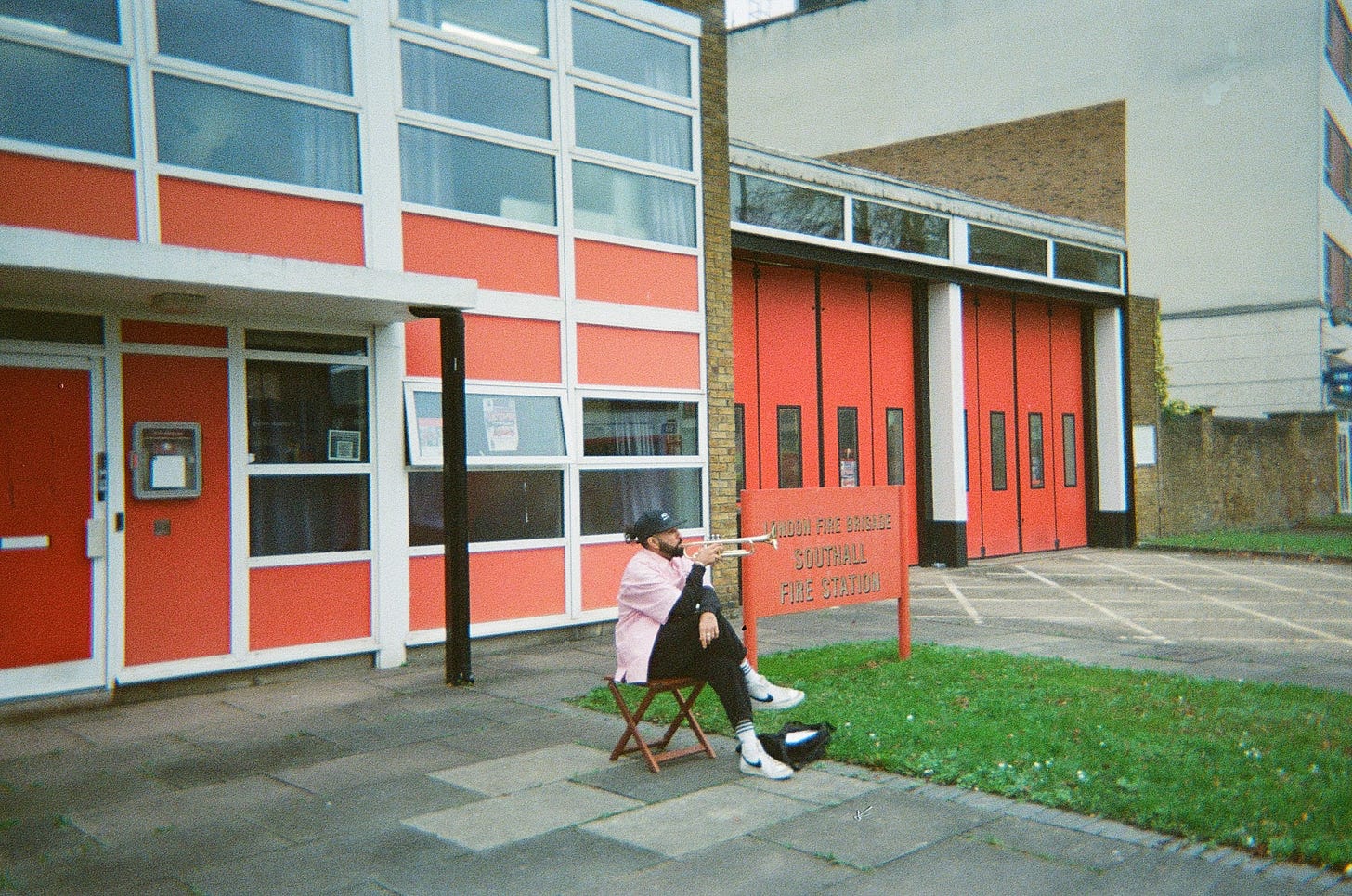You can knock down our buildings, but you can’t knock down our ideas.
Creative Director and Founder of the House of AEIOU takes me on an alternative walking history tour of the ends.
When planning to meet we agreed that in the heart of Southall was the best option. Breakfast at Shahanshah is it. Desi cha and two paronte later, I was taken on an alternative walking history tour of the ends.
Before heading out, of course we discussed all things Southall. We compared notes on growing up, leaving and coming back. ‘There’s a magnetic pull here’ says Manu, creative director and founder of House of AEIOU: a lifestyle place for clothing, art and books. Also a producer and creative consultant for the new exhibition about Southall at Gunnersbury Park Museum, a festival producer for New Gen festival and our newly appointed Culture and Community Officer at Ealing Council.
‘It’s not necessarily a physical thing that brings people to Southall, it’s a vibe, there’s a nostalgic energy that I feel here’. Nostalgia is a feeling that I’ve been experiencing a lot more recently too so I asked Manu to explain what he means. ‘I struggle with nostalgia about Southall because I have a lot of memories here, but also a lot of trauma too. When you live, work and play here like I do, it’s a mix of feelings.’ Manu feels passionate about documenting the history of Southall, warts and all. He’s been making his own blue plaques for alternative and untold narratives about our town, and is on a mission to bring Southall stories back into the public domain through his various roles in community work.
I had been wondering recently whether the recent urge to record our histories is rooted in a place of holding on to something we may lose. Families are moving out of Southall and West London and with housing construction projects such as Parkside Yards we may be at the precipice of a change in the types of community Southall serves. I’m excited by somewhat of a renaissance period for arts, music and culture in the local area but is the rush to document and create because it is in fact the last wave of it all? ‘Even I can’t afford to live here’ said Manu. ‘We’re getting priced out of our own areas. How scary is that? But I do think the essence and energy of Southall will always be there, but in terms of documenting it, what’s important is who’s documenting it’. Whether or not they still live here, people from within our community like Manu, are creating art and documenting our culture. ‘They can knock our buildings down’ said Manu, ‘but they can’t knock down our ideas’.
An interesting bit of local history I was schooled about on our day out was the Indie, Rock and Jazz music scenes in the area and the selection of iconic bands that played in Southall’s Northcote Arms pub also known as the Farx club, now Pranav Care Home. Back in 1969 for its short-lived three year tenure, the Farx club hosted none other than the legendary Led Zeppelin as well as Genesis, Motley and Status Quo he explained. ‘It just makes you think damn, this was happening here, and some of these people have gone on to be massive Jazz and Rock bands. I feel as if Southall just swallowed me up and spat me back out, I was a massive Heavy Metal and Rock fan when I was young, little did I know who had played around the corner. It’s a sad thing that it’s no longer a music venue’ expressed Manu but maybe it’s cool it’s an old people’s home now, as the needs of our community change over time it’s currently a place that cares for residents as old as the band members would be now.
‘Maybe our elders could benefit from music spaces too!’ contested Manu. Yes community needs are changing but the types of events and activities that ‘keep the Southall energy going and bring people back’ is what Manu wants to see for our town. ‘We’ve got a strong culture here, we’ve got roots; Shahanshah is here, Jas Musicals is here, Tudor Rose, we’ve got all these famous institutions I don’t think any other place has the same culture and diversity we have and so we need to claim this space; but then again Southall is basically like a port town, does anyone actually own this space?’ questioned Manu. ‘It’s always flowing with diversity, with different people constantly in and out of the area’. Southall not only has a history of migration but ‘our story is also so unique in terms of resistance because of the trauma and challenges, it’s natural that any group of people here are going to want to claim it as their own. It’s through migration plus resistance that people have made this place theirs. Even with the work on the exhibition, it’s been so exciting for me to be a part of creative concepts such as having Vedic Roots speakers or to organise a Bhangra Dance London workshop; in a space that traditionally we wouldn’t have even been able to breathe in’.
Looking forward to the future of Southall I asked Manu what it’s all about for him. The direction he sees his art going in and the ways in which he plans to continue to represent and advocate for his community. Together with Harpreet who runs Rebels and Pilgrims, he wants to ensure ‘the next generation in our community, regardless of their background, have access to creative expression, creative careers and opportunities to thrive in creative spaces through our work in community and youth centres’, such as the one on Lancaster Road. ‘Remember, we’re like a port town, we have communities coming and going and I want them all to feel like Southall belongs to them’.
Manu went on to explain that ‘we’ve had some traumatic events here in our history that were a big pivot shift in how people looked at this town, and because of things like post-war migration and the end of British Raj, there’s a very complex history here too. For example, the Wolfe Rubber Co factory in Southall that employed a lot of Indians, was because one of the colonels in the British Army stationed in the Panjab then went on to work in the factory and employed Indian workers’, something I am sure he was used to.
‘We come from a history of being divided and conquered’ and although he is fearful it may be happening again, Manu is on a mission to bring the diversity within our communities even closer together. ‘You can even see it in the history of the Wolfe Rubber factory, during the strikes there, the factory management deliberately tried to recruit and bring Pakistani workers from Bradford and other norther towns, playing on national sentiments to divide the Indian and Pakistani workers and community. The management strategy failed and it was unable to create a division between the two communities’.
You can’t hide the influence that Indian, particularly Panjabi culture has had on our area and I do believe that the histories of all communities that have graced Southall’s streets, from the Rockers at Farx, the Rastas at Tudor Rose and the Singhs and Kaurs rushing to 4am Amrit Vela will continue to feel at home in Southall, and a big part of that is the community work Manu is doing in representing our town.
Southall to the World!

